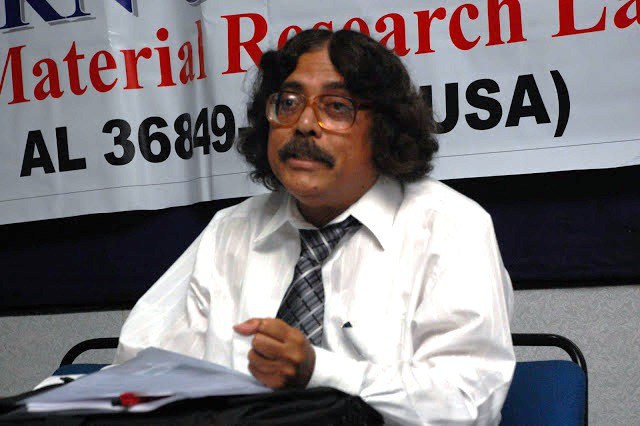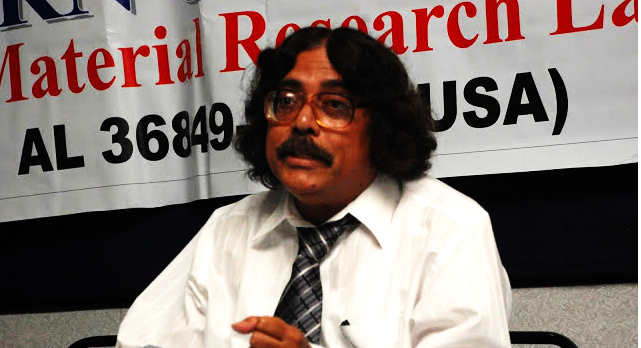Indian Sentiment Getting Hurt As Royal Swedish Academy of Sciences Ignore Critical Issues Regarding Professor Mrinal Thakur

New Delhi, November 6, 2021: The continued deprivation of eminent Indian scientist Mrinal Thakur from being awarded the Nobel Prize in Chemistry by the Royal Swedish Academy of Sciences (RSAS) now has resulted massive discontent among the Indians.
Professor Mrinal Thakur, the Director of Photonic Materials Research Laboratory of Auburn University in the USA, discovered the “Nonconjugated Conductive Polymers.”
Though nominated for Nobel Prize in Chemistry for 19 times, he was not honored with the prize by the RSAS. Subsequently, the Indian public had been holding regular demonstrations and taking out peace marches including the recent one to press their demand for his lawful recognition.
Additionally, Professor Thakur also worked for saving the planet earth from nuclear radiation from emission of radioactive elements from reactors and other testing facilities. He even suggested the Atomic Energy Commission and the Government of India to cover inner and outer-walls of nuclear reactors with the Non-Conjugated Conductive Polymer Papers (NCCPP) to absorb iodine or radioactive rays.
But it was ignored thus putting human life, marine life, flora, fauna and the overall ecology in a given geography at risk. Radioactive iodine is particularly dangerous since it remains as a vapor at ordinary temperature and can travel long distances at a very short time.
It causes a plethora of very serious diseases primary among them being the thyroid cancer. Prof. Thakur said the nuclear waste facilities which store spent nuclear fuel rods must also be insulated with the NCCPP papers.
He, thus, is worked constantly for saving the ecology and human life thus adding force to the global initiatives for lasting peace.
Professor Thakur proved document preserved at Nobel Foundation website for the 2000 Nobel Prize in chemistry is fundamentally flawed antagonizing the RSAS.
Since 2008, the Indian public had been emphatically demanding that the 4-issues that are lingering for years together must be resolved at the earliest possible. However, the RSAS ignored the Indian public who held several peace rallies and demonstrations to make their demand felt.
Globally known for his “Thakur’s Equation” which is Δ = λ/(2nsinα(1 + I/Is)1/2), Professor Thakur also demanded that this theory must be taught in Chemistry Science Universally including India. He also invented a shield that can absorb radiation to save the mother earth.
He demands that the Atomic Energy Commission of India and all other nations must safeguard Human Life with Shield invented by him.
Four Unresolved Issues
However, the following four critical issues have remained unresolved:
- No credit to Professor Thakur in 2000 Nobel Prize and afterwards for his discovery of “Nonconjugated Conductive Polymers.”
- The Royal Swedish Academy is yet to correct the document preserved at the Nobel Foundation website despite repeated requests. The document states a polymer must be conjugated to be electrically conductive – which is nonfactual and the corresponding theory as given is incorrect.
- Professor Thakur’s research funding was abruptly stopped in 2003 as he brought up the incorrectness and inequity regarding the 2000 Nobel Prize in Chemistry.
- Professor Thakur stakes claim to the 2014 Nobel Prize in Chemistry as well since “Super-resolved Fluorescence Microscopy” (2014 Nobel in Chemistry) is primarily based on earlier nonlinear optical experimental and theoretical studies performed by Professor Thakur and colleagues on organic materials.
Alleging that he was deprived by the Nobel Prize in Chemistry in 2000 and 2014 for discovery of the fact that “Nonconjugated” polymers are also conductive, Professor Thakur said the 2000 Chemistry Nobel Prize was awarded for the discovery of Conductive Polymers.
The RSAS in 2000 awarded only those who discovered “Conjugated” conductive polymers but did not honor him for his discovery of “Nonconjugated” conductive polymers. This, he says, is a gross violation of academic norms.
Again in 2014, the Nobel document did not credit him for this equation and the underlying experimental and theoretical works in nonlinear optics that he performed. The US court’s mention of the “Thakur’s Equation” came in response to a case of plagiarism filed by him against the 2014 Chemistry Nobel Laureates.
The Judge ruled there is no law against plagiarism (despite the consequences) in California.
However, in recent official communications, Stanford and UC Berkeley (where Moerner and Betzig work) passed the blame of plagiarism to The Max Planck Institute in Germany (where Hell is employed).
The document preserved at the Nobel Foundation website for the 2000 Nobel Prize in chemistry is fundamentally incorrect, he claims.
Alan Heeger, A.G. MacDiarmid and H. Shirakawa, the 2000 Chemistry Nobel Prize laureates, made fundamentally nonfactual statements in their Nobel documents that only conjugated polymers can be electrically conductive.
Legal communications involving US attorneys have recently established that they agreed that Professor Thakur’s experimental works and theory are fundamentally correct while theirs are incorrect!
Thakur’s Equation Explained Scientifically
The 2014 Chemistry Nobel Prize was awarded to Betzig, Hell and Moerner for their works on “Super-Resolved Fluorescence Microscopy.”
The nonlinear optical coefficients as a function of wavelength, excited-state lifetimes, two-photon absorption and the detailed saturation dynamics have all been measured using femtosecond-duration pulses and their theoretical interpretations have been established.
The excited state lifetime as measured is about 1.8 ps. In the off-resonant domain the response is instantaneous.
As discussed in such reports, (phase-space filling model applied to PTS-polydiacetylene crystal), the fractional change in oscillator strength, δf/f is related to the number fraction of electrons (excitons) involved in the transitions as given in the following:δf/f = – N/Nswhere Ns is the saturation density.
For organic materials, energy levels remain essentially unchanged when light is incident on it. Using the phase-space filling model as above verified by detailed experimental measurements (Thakur et al. 1985-88), the equation relating the resolution and laser light intensity (Thakur’s Equation) that one arrives at isΔ = λ/(2nsinα(1 + I/Is)1/2).
Here Δ stands for resolution, I stands for laser light intensity, λ is wavelength, n is refractive index, α is semi-aperture angle and Isis saturation intensity.
This is the central equation, Equation 3 given in page 5 of the 2014 Nobel document preserved at the Nobel Foundation website and is derived based on phase-space filling model and the statistics involved in the emission process. No reference for this equation was provided in that document.
Super-resolved fluorescence microcopy, in particular stimulated emission depletion microscope is essentially based on femtosecond pump-probe measurement in third order optics of organic materials.
The mechanisms are adopted from earlier experimental and theoretical studies in third order optics involving well-defined materials such as polydiacetylene single-crystal films.
The correlation between the line-width (resolution) and optical intensity is developed using phase-space-filling model used in the case of PTS-polydiacetylene film.
Professor Thakur demands immediate actions by the world leaders through their interventions in his continued ignorance by the RSAS for the discovery of the Non-Conjugated Conductive Polymer which is a violation of the academic norms.





